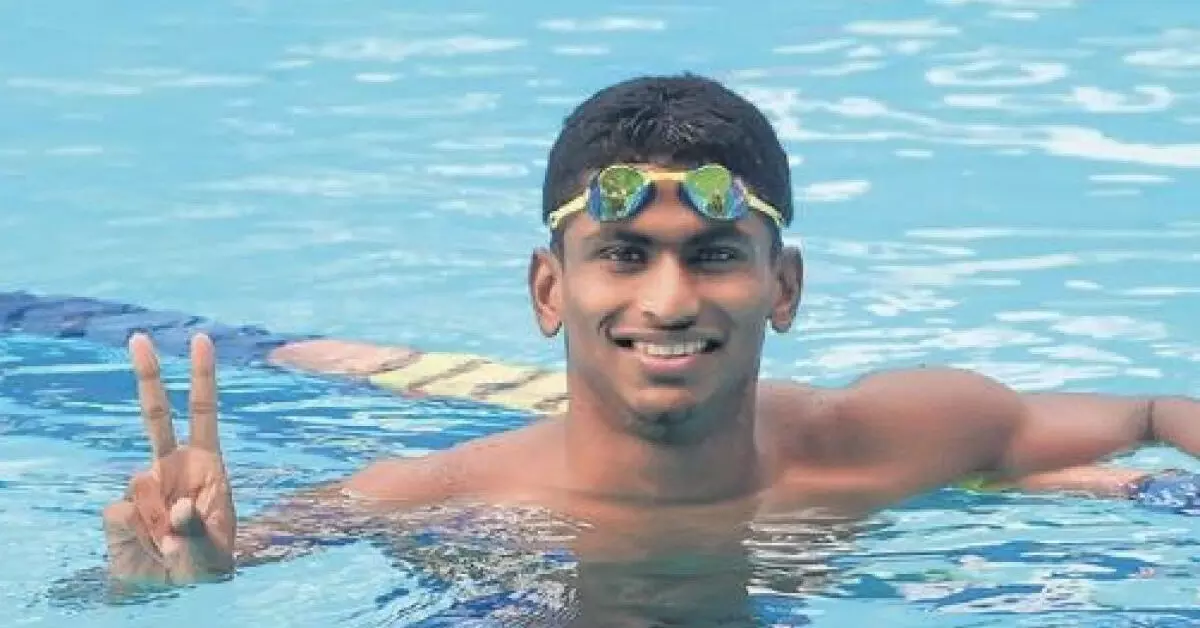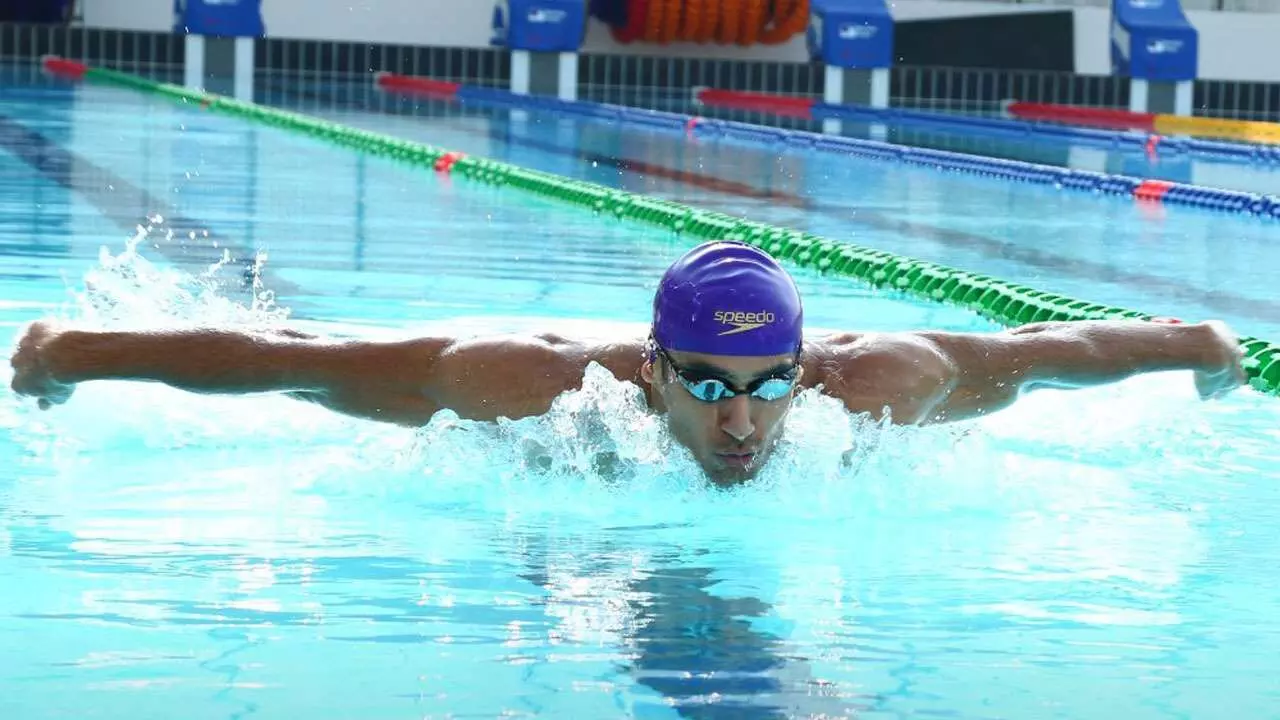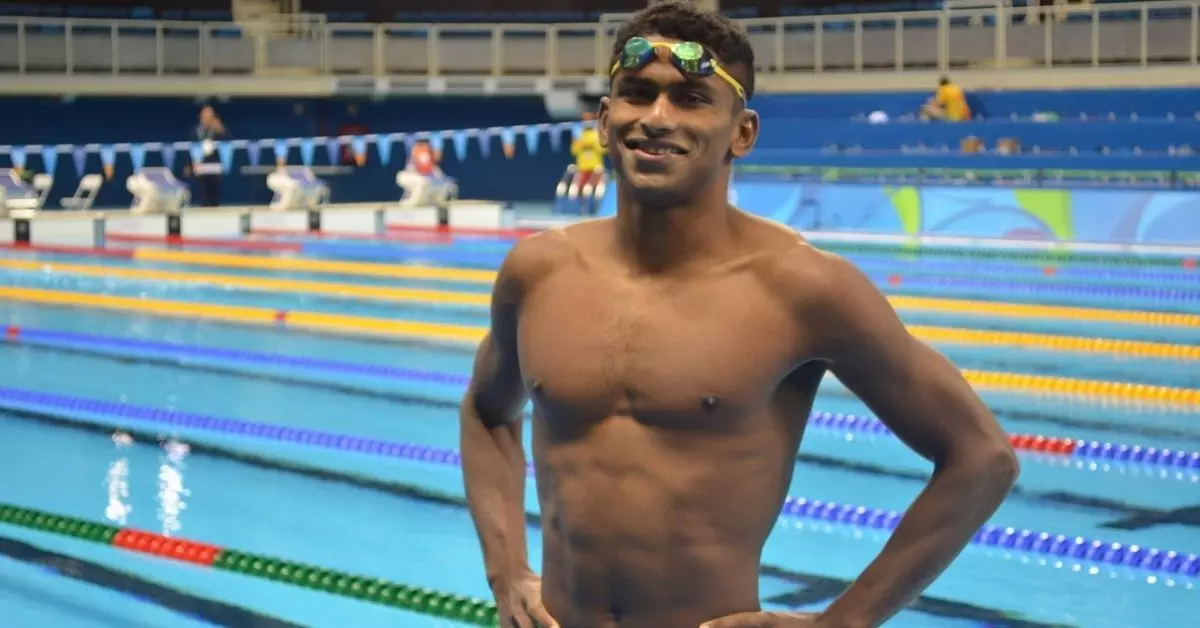Swimming
Indian Swimming: Has the glass ceiling finally been broken?
Three swimmers will represent the Indian contingent at the Tokyo Olympics— but Sajan Prakash particularly stands out. Know why.

Sajan Prakash achieved Olympics qualification timings and made history for Indian swimming.
Since the teenage days of arguably India's best swimmer Virdhawal Khade (2008-09), Indian swimming has never been blessed with such fantastic news over the space of a week. Sajan Prakash and Srihari Nataraj, qualified for the Tokyo Olympics after achieving the "A" qualification mark in 200m butterfly and 100m backstroke events respectively. Maana Patel booked a ticket to Tokyo in the 100m backstroke event through the Universality quota offered by FINA — thus becoming the only Indian female swimmer to represent India at this edition of the Games.
Rewind to 2008-09
13 summers ago, the tall Khade set alight the Commonwealth Youth Games setting national records in 50m, 100m, 200m, and 400m freestyle events. The very same year Virdhawal along with Sandeep Sejwal participated in the Beijing Olympics, with the latter smashing national records (his own) in the 100m and 200m breaststroke swims by wide margins.
Many other national records were set at the Asian Age Group Championships 2009, quite a few of which stand to date. Collectively these two years were considered to be a golden period in terms of national records being broken by both genders.

The following decade saw Khade and Sejwal secure bronze medals at the 2010 and 2014 Asian Games. Khade's four freestyle and two butterfly national records have stood the test of time for best part of the decade and more. Sejwal became the undisputed king of the breaststroke and his national records are still a dream for the next generation — including S.P. Likith.
But the rest drew blank and Indian swimming languished in the backwaters of World Aquatics at least for the first half of last decade.
The saga of Sajan Prakash
The emergence of Sajan Prakash at the domestic level in 2015, brought some light at the end of the never-ending dark tunnel of Indian aquatics. At the 2015 National Games in Kerala, he won six gold and 3 silver medals — becoming the best athlete of the National Games.
At the 2016 South Asian Games, Sajan Prakash clinched three gold medals in 200m butterfly, 1500m freestyle, and 4x200m freestyle. That year, he made his Olympic debut at the 2016 Rio Olympics and finished at 28th position in the 200m freestyle.
In 2018, Sajan Prakash competed at the Gold Coast Commonwealth Games, where he finished 8th in the 200m butterfly final with a timing of 1:59.05 seconds.
That year, in August, at the Asian Games, he participated in the 100m and 200m butterfly, 4x200m freestyle relay, and 4x100m freestyle relay. He finished a respectable 5th in 200m butterfly by clocking 1:57:75 seconds.
The versatile Indian participated at the Gwangju World Championships in 2019 in the 200m freestyle, 200m butterfly and 100m fly events. To his credit, Sajan clocked personal bests in all 3 events and attained the FINA-B qualification in the 200 fly clocking 1:57:73 seconds finishing 24th in the process.
The momentum attained by him at the 2019 Worlds could not be carried forward with the pandemic wrecking havoc in many athletes' training programs.
Dryland training became the norm. But worse was to follow
It all started in 2019 during the Gwangju World Championships when Sajan felt pain in his neck and the situation escalated during the SAF games in Nepal. On the day of his event, Sajan could not move his hand, and scans later revealed a slip disc in his neck with his C4-C5-C6 bones causing the problem.
Just as he completed his rehab and was ready to jump into the pool at his training base in Phuket, the pandemic struck worldwide resulting in total lockdowns. With no physio to support, frustrations grew.
Sajan then decided to move to Dubai in August 2020, and work under the aegis of Pradeep Kumar.
Butterfly event is considered the most difficult of the four strokes requiring immense muscle strength and technique. The synchronization of the two dolphin kicks and the pulls take a lot of work and a series of progression drills to master.

Unfortunately, Sajan could barely land one stroke due to the pain and was restricted to some freestyle/backstroke training up until November-December 2020 when the 15-16 months of pain finally vanished.
Not wasting much time Sajan participated in an Olympic qualifier meet in Latvia in February this year.
Without much training in the butterfly stroke, the Indian still managed to clock a sub 2-minute timing which was a huge positive to the minds of the swimmer and his team. Three months of intensive training up to the Belgrade event saw Prakash clock 1:56:96 seconds breaking his own national record.
But the elusive Fina A mark was just out of reach.
A week later in Rome, the magic figure of 1:56:48 was breached as the Prakash clocked 1:56:38 to become the first Indian swimmer ever to breach the "A" qualification time. A watershed moment not only in his career but in the history of Indian swimming.
This journey from being unable to execute even a single butterfly stroke to achieving direct qualification over ten months or so is the result of unwavering faith in himself and the ability of Pradeep Kumar to bring out the best in his ward.
What lies ahead in Tokyo
The wise men say 'Well begun is half done' but the other half in the form of the competition that awaits him in Tokyo will be much tougher than what he has overcome over the last couple of years.
Out of the 43 swimmers who have cleared the A qualifying mark, the Indian is ranked 42nd. For simplicity, if we assume the same timings are clocked by all swimmers at Tokyo, Sajan needs to improve his best swim by 1:23 seconds to qualify for the semi-finals.
No matter what happens in a few weeks' time at the Japanese capital, Sajan Prakash has broken the glass ceiling for coming generations of Indian swimmers.
And just for that, he will be long remembered in the annals of Indian swimming.
